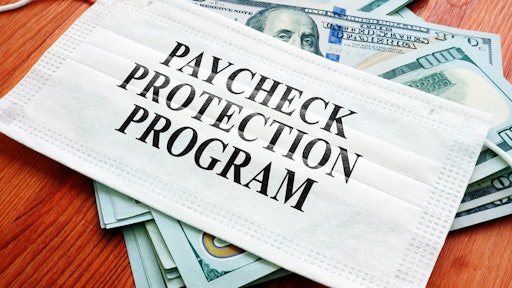
Government contractors that base their billings and proposals on overhead rates could see a significant reduction in revenue if their PPP loan is forgiven, a consideration they’ll have to make before they decide to have the loan forgiven or to just repay it.
Adhering to Federal Acquisition Regulations
According to the Federal Acquisition Regulations (FAR) 31.201-5, the applicable portion of any income rebate allowance, or other credit relating to any allowable cost received by the contractor, will be credited to the government as either a cost reduction or by a cash refund.
As a result, government agencies may take the position that this applies to forgiven PPP loans and require a credit to overhead.
Reducing Overhead Rates During PPP Loan Forgiveness Year
Ultimately, this means that state DOT contractors, architects and engineers would need to reduce their overhead costs during the year that the PPP loan is forgiven – with a potential reduction to their overhead rate of 20 to 40 percent.
Assuming that these loans are forgiven in 2021, this could dramatically effect billing rates and proposals starting 2022, when the 2021 rates will be approved. Depending on how a firm's contracts are structured, they may be required to adjust the prior year's billings to the audited overhead rate, or they may just start using the new rate when it is approved.
In addition, when negotiating future fixed price multi-year contracts using the artificially low rate caused by the PPP loan forgiveness, the negative effect on revenue can last for the life of the contract.
It’s also important to note that the IRS’ position is that there is no deduction allowable for expenses related to a forgiven PPP loan. This means that there will be an increase in taxable income in the year that forgiveness was provided.
The Best Next Steps?
While the State Departments of Transportation around the country have not yet weighed in on this issue, for planning purposes, it is safe to assume that they will follow the federal guidelines, and a credit to overhead will be required.
For firms with a high-percentage of government contracts, it’s best to analyze overall future cash flow in scenarios for both with and without PPP loan forgiveness.
If there is no forgiveness, then the loans will be paid back with some interest being paid on the loan. Conversely, if the loan is forgiven, there will be negative cash effects due to both the reduced overhead rate, and the tax hit because of the loss of the deduction.
With multi-year contracts, there could be long-term, negative impacts on revenue, and contractors may be in a better position to just pay off the PPP loans.
Where to Learn More
One of the biggest challenges of 2020 is understanding the fine print that comes with new pandemic-related stimulus packages. Rightly so, many of the new tax incentive programs are rolled out very rapidly, but often come with minimal long-term guidance.
Thankfully, industry organizations such as the American Council of Engineering Companies (ACEC) are advocating for no reduction to the overhead costs due to forgiven PPP loans.
It is also recommended that you consult with your accounting partners who can help provide more guidance on whether or not to move forward with seeking PPP loan forgiveness, or repaying the loans.
Conclusion
2020 has certainly been a challenging year for many industries, including the government-contracting arena. While PPP loans are helpful when it comes to payroll issues, there may be some revenue-generating consequences that come from seeking forgivenes John Mahaffey is director of audit and accounting services at Gorfine, Schiller & Gardyn.
John Mahaffey is director of audit and accounting services at Gorfine, Schiller & Gardyn.
It's best to determine the right path forward, and always keep future revenue-generating opportunities in mind.
John Mahaffey, a Director with Gorfine, Schiller & Gardyn, has more than 20 years of accounting experience. Mahaffey specializes in performing audits of indirect cost rates for state highway contractors, assists in preparing incurred cost submissions for federal government contractors, and performs audits, reviews, compilations and tax work for real estate developers and investors. For more information about Gorfine, Schiller & Gardyn, please click here.





























